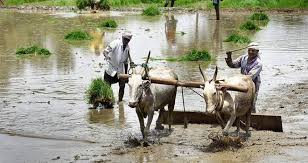Bhubaneswar: The recent devastation caused by Cyclone Fani has taught policy makers that they need to pay attention to certain overlooked areas to avoid misery for people who face nature’s fury more often than others in this part of the country. One of the focus areas of attention is rain-fed agriculture.
According to government reports, Odisha has around 74 per cent of the gross crop area under rain-fed condition while 19 of the 30 districts are rain-fed. Due to lack of penetration of irrigation facilities in the state, large areas under cultivation are rain-fed but hardly get the needed focus. On the other hand, the government seems to spend less on creating alternative livelihood options for victims of natural disasters in case their prime cultivated crops go for a toss.
According to the experts working in the area, the state government and its policies hardly speak about rain-fed agriculture. On the other hand, livestock — particularly indigenous poultry, birds and fisheries which are an essential component in the rain-fed ecosystems — receive less policy attention.
“There is a need for focused attention and budget allocation for rain-fed agriculture and other alternative livelihood options so that the farmers and people involved in these are not affected badly during natural calamities like cyclones,” said Basant Nayak, a Budget analyst.
He also added that Odisha’s rain-fed agriculture is vulnerable to the harsh impact of climate change, contributing to more than 40 per cent loss in food crop production. But it gets least policy attention.
According to the 2018-19 Agriculture Budget, allocation of funds stood at 61 per cent for Water Resources department which works for irrigation projects, 28 per cent for Agriculture department and 7 per cent for the Cooperation department while the Fisheries and Animal Husbandry department received a mere 5 per cent.
The second dominant sector in receiving funds is the ‘agriculture and allied sector’ but post 14th Finance Commission the sector witnessed a decline in allocation of funds from 32.85 per cent in 2014-15 to 27.75 per cent in 2018-19. A squeezed trend in resource allocation is seen in the budget of the Cooperation department since 2013 (from 10.49% to 6.85%) and a sharp decline in the allocation for Fisheries and Animal Resource department. The share has remained around 5 per cent since 2012.
Many have left farming as they see much profit in allied and alternative activities. They also suggest the side activities for small and marginal farmers to prevent poverty.
Gyaneshwar Sahoo, a successful rural fish entrepreneur based in Subarnapur village in Gop said, “I saw many farmers losing funds due to erratic monsoon. As they solely relied on monsoon, they suffered setbacks often. While many migrated to other places, I used fishing as a business using latest technologies and now I am able to earn lakhs from the business.”






































